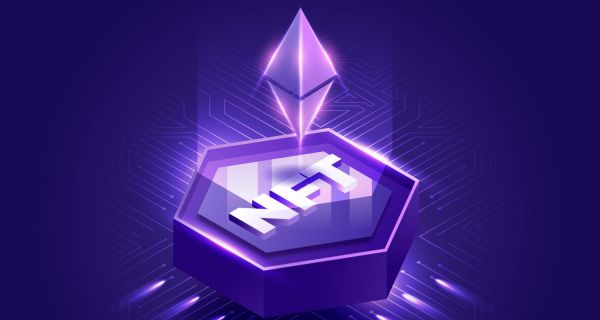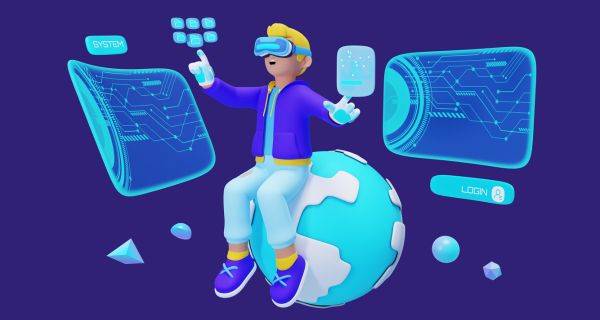Many people give up on their ideas of web and mobile app development due to the complexity and cost of coding. Many people have great ideas for web applications but need more technical skills or resources to turn them into reality. Well, building Web 3.0 applications is even more challenging. It takes more work and expertise than conventional sites, requiring high technical knowledge and familiarity with Web3 protocols and standards. It also involves a lot of know-how of the underlying tech stack and uncertainties due to the novelty and complexity of Web3 technologies. However, it could be easy with no code app builder.
What is no code low code development?
No code low code development platforms allow you to create Android, iOS, and web apps with minimal or without coding. It has pre-built templates, blocks, and integrations to quickly get you started. You can use the grid to drag and drop, and upload assets to create apps.
This article will explore examples, benefits, and the future of application development without coding. But before that, let us look at what Web3 is made of.
Web 3.0: A New Era For Internet
Web 3.0 unleashes a new era for the internet. It is based on technologies like blockchain, NFTs, Immersive Technology, and AI. Our goal is to understand whether these technologies can be simulated using no code tools and what it means.
Blockchain
You must know about blockchain. It is a new way of storing information in a data stack comprising different blocks. Some applications can integrate blockchain into them when using no coding platforms. It makes App making with blockchain super easy for beginners.
NFTS

NFTs are a new way of owning and collecting digital items. NFT stands for Non-fungible token. These are art pieces that exist on the blockchain. Making NFTs is super easy, and most NFTs can be easily mined using no code tools. Plenty of tools allow you to mint NFTs based on blockchains like Solana, Polygon, and Ethereum easily for a small fee.
Immersive Tech: AR, VR, XR, Spatial Computing
Immersive techs like AR, VR, and XR are the basic foundation for technologies like Spatial Computing and the Metaverse. But making a complete immersive tech product or feature is a lot of work. Thus, no code low-code platforms like PlugXR allow you to design and deploy immersive models in the form of cloud-based services. As more platforms try to make their place in this space, these tools will likely evolve to a good extent.
Artificial Intelligence

Artificial intelligence is starting to make its place in the Web3 world. They facilitate a more convenient way to transfer data. And new platforms are more advanced in terms of security and features. You can introduce AI features in your platform through no code tools. You can add functionalities like Chatbots and advanced suggesting mechanisms. Introducing AI without complex coding can be hard, and these tools make it a lot easier.
Understanding no code platforms for Web 3.0
No code Web app builders are online platforms that provide a user-friendly, fast, and affordable way to build applications in a visual software development environment. The fact that coding requires having a development team in place and hence a high cost, developers have been working on technology that does not require programming skills to develop web and mobile apps. The same holds true for building immersive apps and Web3 apps. Statistica states that the global low-code platform market will reach approximately 65 billion U.S. dollars by 2027.
But what if you want to create not just any application but a Web3 application? Web 3 is the evolution of the internet from a 2-dimensional interface to an interactive environment. It is hosted on decentralized technologies like blockchain. It provides more secure, efficient, and democratic interactions on the web. Many new-age platforms can help you with that too. Let’s understand this by taking some popular Web3 platforms into account.
Evolution from Coding to No Code
We have come a long since the early days of programming when generating a single output could take thousands of days to present due to coding hassles.
The Rise of Programming in the 1970s-1990s
In the 1970s and 1980s, visual programming languages emerged, which used graphical elements, such as icons, buttons, menus, and diagrams, to represent code and logic. In the 1990s, the emergence of the World Wide Web (WWW) sparked a new wave of innovation and creativity in software development. The WWW enabled users to access information and services from anywhere in the world using web browsers.
But designing and creating anything took work. Knowledge of all the aspects of the internet, like web servers, different programming languages, and more, was essential to surf the web and start a page of your own. Since then, the idea of tools that can help you create web pages and sites without coding has been on the mind of different builders and would later come to fruition too.
The Era of No Code: 2000s-Present
It was in the 2000s and 2010s that the paradigm shift in software development took place. It liberated the development world from applications and web pages that were just based on coding tools. The new web had platforms that leveraged no code and low-code platforms to work. These platforms were not complex but were a big win for people who needed these sites for simple use cases like blogging. Since then, they have only improved, and now they can even be used to add complex functions like Immersive technologies to your applications with no extra effort.
Why should you choose a no code platform?
There are many benefits for individual creators, developers, and organizations. Some of these benefits are:
Saving time and money
You can eliminate the need for coding and hiring developers. They can reduce the development time by 90%, which means faster delivery and deployment of web applications, thus overcoming complexity and reducing cost. As more and more people from designing and content creation get into developing apps, the use of these tools will only go up.
Increasing creativity and innovation
Web3 is all about creativity, and coding shouldn’t be a barrier to limiting anyone’s vision; no code technology intends to do just that. They allow anyone to experiment with new ideas and solutions without being limited by technical constraints or dependencies. This fosters more creativity and innovation in web development. They also allow better collaboration and feedback among users, customers, and investors, improving the quality and usability of web applications.
Enhancing user experience and engagement
It provides more control, transparency, and ownership over data and assets to users. This enhances the user experience and engagement of web applications, as users can benefit from more security, efficiency, and democracy on the web. You can customize and personalize your web applications according to your preferences and needs, increasing general satisfaction and allowing you to make necessary changes in the future.
Supporting social impact and Change
It enables more participation, collaboration, and inclusion in the web economy. This supports social impact and change, as more people can access and contribute to web applications that address various social, environmental, and economic challenges. They also empower their users to have more voice and influence in the web ecosystem, which can promote more diversity and equality on the web, mainly between non-coding and coding professionals.
The possibilities lying with No Code Solutions
The future of platforms that need no coding skills looks bright and promising. With the changing demographic of businesses in Web 3.0, not only are they technically able to launch their platforms, but soon more will follow and establish their enterprise. Following are some of the predictions or expectations for the future of these platforms:
1. More platforms will emerge or evolve.
As the demand and interest for Web3 applications grow, more of these platforms will emerge or evolve to offer more features or integrations with different. Newer platforms may focus on specific domains or sectors such as finance, gaming, social media, education, healthcare, etc.
2. More features or integrations will be added or improved.
With the evolving technology and innovation of Web3 protocols and services, no code app development platforms will undoubtedly introduce many new features and integrations to enhance functionality and usability. Future evolution will likely expand current template libraries, offering an extensive range of pre-built designs that cater to various industries and use cases. These templates can be the starting point for creators to build experiences for their projects, saving time and effort in the initial design phase.
3. More education or awareness will be provided or promoted.
As the adoption and understanding of Web 3 protocols or services increase, awareness will spread. It will improve the adoption or performance of these platforms. For example, more tutorials and guides will be available for developers and creators to refer to. They will inform people about the various benefits and ways to over the challenges, if any.
Conclusion
No code Web 3 app development platforms are the future of web development. It will revolutionize how people create and use web applications. It allows anyone to create web applications without coding with pre-built templates, blocks, and integrations. Businesses looking to get into Web3 with minimal resources can get started with no code-free app builder. If you are considering adding immersive tech to your workflow without the hassle of coding, Sign up to PlugXR Creator now. We are a cutting-edge no code, low code platform for developers and creators in the Web 3.0 immersive tech space.

